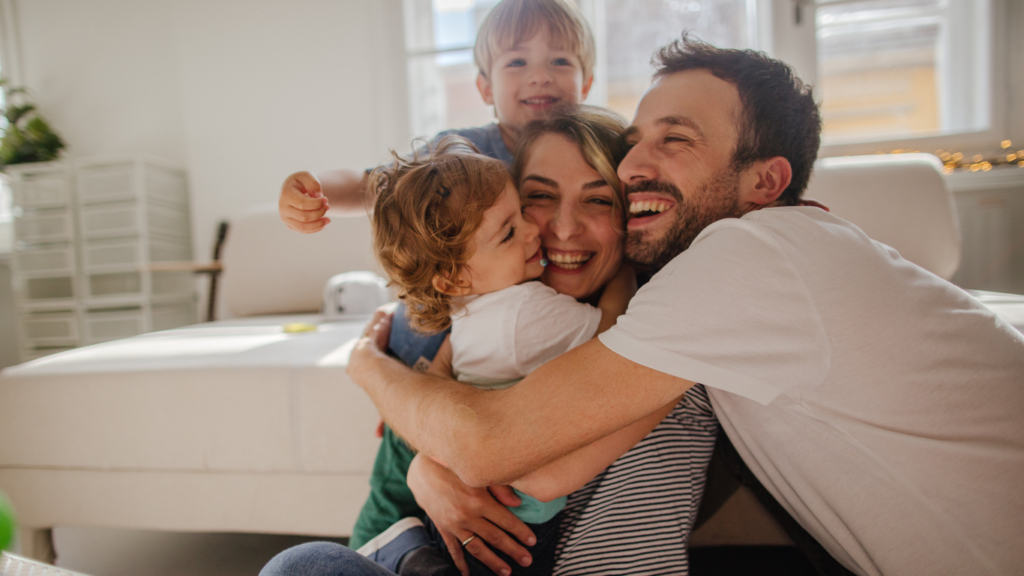Parenting isn’t just about guiding kids through life—it’s about shaping their emotional well-being and resilience. I’ve found that mindful parenting can be a game-changer, helping us stay present and connected while fostering a positive environment for our children to thrive. It’s not always easy, but the rewards are immeasurable.
When we approach parenting with mindfulness, we’re not only teaching our kids how to handle challenges but also modeling emotional intelligence and empathy. It’s about creating a balance where we nurture their happiness while encouraging their independence and strength. Small, intentional changes can make a big difference in raising confident, resilient children.
Understanding Mindful Parenting
Mindful parenting focuses on staying present, aware, and connected during interactions with children. It prioritizes intentional responses over automatic reactions in parenting moments.
What Is Mindful Parenting?
Mindful parenting means approaching interactions with children non-judgmentally and with full attention. This includes actively listening, understanding emotions, and responding compassionately to a child’s needs. It involves self-awareness of personal triggers and emotional patterns while fostering a calm and supportive atmosphere for growth.
Examples of mindful parenting include pausing to breathe before addressing challenging behaviors, acknowledging a child’s feelings during conflicts, and maintaining eye contact during conversations. Practicing mindfulness helps create a bridge of understanding and trust, enhancing the parent-child relationship.
The Importance of Mindfulness in Parenting
- Mindfulness in parenting fosters the emotional regulation, resilience, and mental well-being of both parents and children.
- This approach reduces stress-driven reactions, promotes deeper bonds, and models healthy coping strategies.
- By practicing mindfulness, I create an environment conducive to positive development.
- Children learn to express emotions constructively, navigate challenges with confidence, and develop empathy.
- Trusted studies, such as those published by the American Psychological Association, show that mindful practices in parenting correlate with improved family dynamics and overall child happiness.
Benefits of Mindful Parenting

Mindful parenting positively impacts children by:
- promoting resilience
- happiness
- emotional growth
This approach creates stronger connections and a nurturing environment for both parents and children.
Building Resilience in Children
By modeling mindfulness, I teach children to face challenges calmly and develop coping mechanisms. Children learn to manage emotions effectively when I demonstrate patience during difficult moments. Studies show that mindful parenting is linked to enhanced emotional resilience, enabling children to bounce back from setbacks. Simple actions like validating their feelings and encouraging problem-solving help build this foundation.
Fostering Happiness and Emotional Well-being
My mindfulness directly influences children’s emotional health and happiness. When I respond to their needs attentively, they feel valued and secure. Research by the American Psychological Association highlights that children raised with mindful parenting are more likely to experience reduced anxiety and develop a positive self-image. Regularly practicing gratitude and mindfulness activities together further nurtures their emotional well-being.
Strengthening Parent-Child Relationships
Mindful interactions strengthen the bond between me and my children by creating mutual trust and understanding. When I listen without judgment and show empathy during discussions, I help them feel heard and supported. This deeper connection reduces conflicts and fosters open communication. Strong parent-child relationships have lasting benefits, including better social skills and increased emotional intelligence in children.
Practical Tips for Mindful Parenting
Mindful parenting involves actionable strategies that create a nurturing and connected environment for children. These practices help cultivate resilience, emotional intelligence, and happiness.
Practicing Active Listening
Active listening fosters understanding and strengthens parent-child connections. I focus entirely on my child during conversations, setting aside distractions like phones or tasks. I make eye contact, nod, and use verbal affirmations to show I’m engaged. When my child shares feelings, I paraphrase their words to confirm understanding. For example, if they say, “I’m scared of the test,” I respond, “It sounds like you’re feeling nervous about the test.” This builds trust and validates their emotions.
Managing Stress and Emotions
Managing my emotions models healthy regulation for my child. To stay calm, I use mindfulness techniques like deep breathing or brief pauses before reacting. For instance, when conflicts arise, I inhale for four seconds, hold for four, and exhale for six. This keeps me composed and prevents reactive parenting. If I’m overwhelmed, I acknowledge it to myself and use self-compassion strategies, like silently reminding myself, “It’s okay to feel stressed; I can handle this.” This approach demonstrates constructive ways to manage stress and creates a supportive environment.
Encouraging Open Communication
Creating open communication channels helps children feel heard and respected. I encourage my child to voice their thoughts and emotions without fear of judgment. For example, during family discussions, I ask open-ended questions like, “What was the best part of your day?” or “How do you feel about that?” I remain approachable even when they express challenging emotions, offering support instead of solutions unless they request advice. This openness strengthens trust and invites meaningful conversations.
Teaching Mindfulness to Children
Introducing mindfulness to children helps them manage emotions, improve focus, and build resilience. By using simple techniques and integrating mindfulness into daily routines, parents can support their child’s emotional development.
Simple Mindfulness Techniques for Kids
Using short, engaging exercises makes mindfulness accessible for kids. Breathing exercises, such as having children blow out to “move” an imaginary feather with their breath, teach focus and calmness. Body scans help children understand physical sensations by asking them to relax each body part slowly. Gratitude practices, like listing three things they’re thankful for daily, encourage positive thinking. Visualization exercises, such as imagining a peaceful place, reduce anxiety and improve emotional regulation. Engaging storytelling with mindful themes can also promote awareness and empathy.
Incorporating Mindfulness into Daily Routines
Embedding mindfulness in everyday activities makes the practice natural and consistent. Encourage mindful eating by asking children to notice flavors, textures, and colors during meals. Use bedtime routines for reflection by discussing their day’s highlights and emotions. Create mindfulness moments during transitions, such as practicing a quick deep-breathing exercise before leaving for school. Family mindfulness exercises, like shared stretching or a brief meditation, foster a supportive group atmosphere. By incorporating these practices into routines, mindfulness becomes a habitual and valuable part of their daily life.





